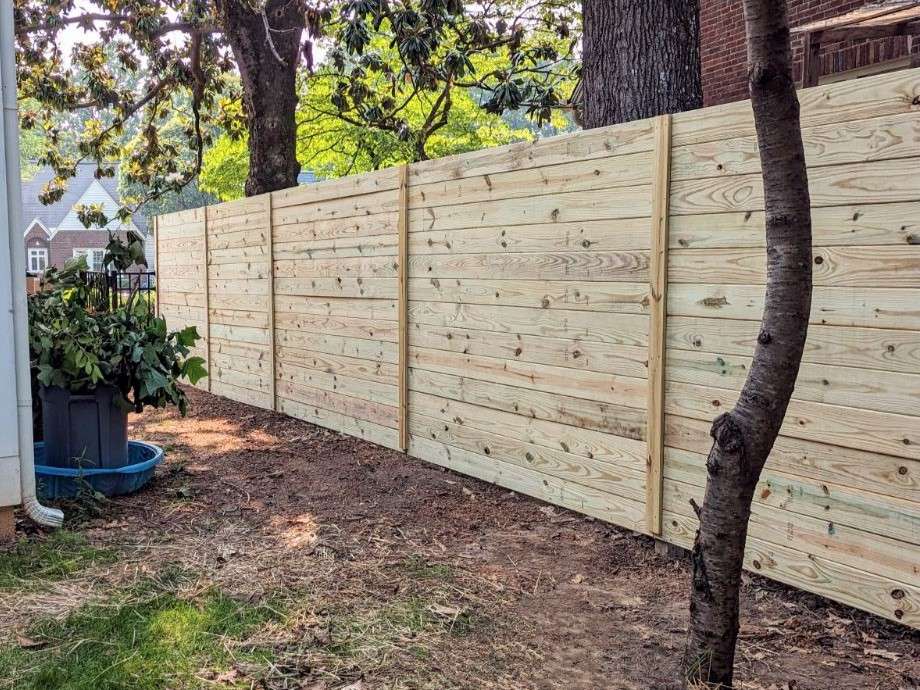All Categories
Featured
Table of Contents
Eco-Friendly Fencing Materials for Sustainable Living
As concerns about climate change and environmental degradation grow, more homeowners are seeking ways to make their homes and properties more sustainable. An important decision homeowners are making is selecting more sustainable fencing materials. Luckily, there are several sustainable fencing options that offer both beauty and functionality while reducing environmental impact. Here are some of the top eco-friendly fencing materials that environmentally conscious customers can consider:
Bamboo is one of the most environmentally friendly materials you can choose for fencing. Bamboo grows rapidly, which means it can be harvested more quickly and sustainably. While other fencing materials take decades to mature, bamboo reaches full growth in just a few years. Bamboo fences are long-lasting, naturally pest-resistant, and require little maintenance. Additionally, bamboo is biodegradable, so it won’t contribute to landfill waste when it’s eventually replaced. With its sleek and modern appearance, bamboo fences can complement a wide range of outdoor designs.
![]()
Hemp, an eco-friendly material, is becoming a popular option for fences due to its sustainable qualities. It is grown without pesticides, herbicides, or chemical fertilizers, making it an incredibly eco-friendly crop. Hemp fencing is made from strong, durable fibers that naturally resist pests, making it long-lasting. Hemp is a biodegradable material that won't contribute to waste, and it’s a fast-growing plant, making it resource-efficient. Hemp fences have a distinctive, natural appearance and can serve both functional and decorative purposes in your garden or yard.
As concerns about climate change and environmental degradation grow, more homeowners are seeking ways to make their homes and properties more sustainable. An important decision homeowners are making is selecting more sustainable fencing materials. Luckily, there are several sustainable fencing options that offer both beauty and functionality while reducing environmental impact. Here are some of the top eco-friendly fencing materials that environmentally conscious customers can consider:
Bamboo is one of the most environmentally friendly materials you can choose for fencing. Bamboo grows rapidly, which means it can be harvested more quickly and sustainably. While other fencing materials take decades to mature, bamboo reaches full growth in just a few years. Bamboo fences are long-lasting, naturally pest-resistant, and require little maintenance. Additionally, bamboo is biodegradable, so it won’t contribute to landfill waste when it’s eventually replaced. With its sleek and modern appearance, bamboo fences can complement a wide range of outdoor designs.
2. Eco-Friendly Plastic Fencing Made from Recycled Materials
Recycled plastic fences are made from repurposed plastic materials, making them a great choice for sustainable living. Recycled plastic fencing is made from repurposed waste plastics, such as bottles, and transformed into long-lasting, weatherproof planks. Choosing recycled plastic over virgin plastic helps to reduce the demand for new plastic production, cutting down on energy consumption and waste. Recycled plastic fences are durable and weather-resistant, requiring minimal upkeep. These fences do not need painting or staining, further reducing the use of harmful chemicals, making them a perfect solution for eco-conscious homeowners.3. Composite Fencing
Made from recycled wood fibers and plastic, composite fencing is a more sustainable choice than traditional wood. Composite fencing uses recycled wood fibers, which reduces the need for new timber, helping to prevent deforestation. Composite fences have the look of wood but require much less maintenance and are resistant to pests. Composite fencing doesn't warp, rot, or splinter like wood, making it a durable and long-lasting investment. Many composite fencing options are also recyclable at the end of their life cycle, making them a great eco-friendly alternative.4. Recycled Wood Fencing for Eco-Conscious Homeowners
If you love the rustic charm of wood, reclaimed wood is a fantastic eco-friendly choice. Reclaimed wood is salvaged from old barns, warehouses, and other structures, repurposing materials that would otherwise go to waste. Using reclaimed wood reduces the need for new timber, protecting forests and lowering the environmental impact of manufacturing. When you choose reclaimed wood, you’re helping to preserve history and promote sustainability. Reclaimed wood can be treated with eco-friendly preservatives to make it last longer without the need for harmful chemicals.5. Green Fencing (Hedges, Shrubs, and Climbing Plants)
Living fences, made up of shrubs, trees, or climbing plants, provide both beauty and sustainability. Living fences involve using plants like shrubs and trees to naturally form a boundary on your property. Living fences not only provide privacy and reduce noise but also contribute to cleaner air by absorbing CO2 and releasing oxygen. A green fence enhances local biodiversity, offering food and shelter for wildlife. Living fences require minimal maintenance once established and can be tailored to fit your landscaping vision. Plus, they contribute to soil health and reduce erosion, offering an all-around eco-friendly solution.6. Hemp Fencing

Hemp, an eco-friendly material, is becoming a popular option for fences due to its sustainable qualities. It is grown without pesticides, herbicides, or chemical fertilizers, making it an incredibly eco-friendly crop. Hemp fencing is made from strong, durable fibers that naturally resist pests, making it long-lasting. Hemp is a biodegradable material that won't contribute to waste, and it’s a fast-growing plant, making it resource-efficient. Hemp fences have a distinctive, natural appearance and can serve both functional and decorative purposes in your garden or yard.
Conclusion
There are many eco-friendly fencing options available for environmentally conscious customers looking to reduce their carbon footprint while enhancing their property. Eco-friendly options like bamboo, recycled plastic, and reclaimed wood help you build a fence that is both sustainable and stylish. There’s a wide range of benefits to each material, so homeowners can choose what fits best with their environmental goals and aesthetic preferences. By choosing eco-friendly fencing, you not only contribute to the health of the planet but also create a more sustainable and beautiful outdoor space for your home.Latest Posts
Design and Performance Combined
Published Apr 21, 25
1 min read
Design and Efficiency Combined
Published Apr 21, 25
1 min read
Design and Efficiency Combined
Published Apr 21, 25
1 min read